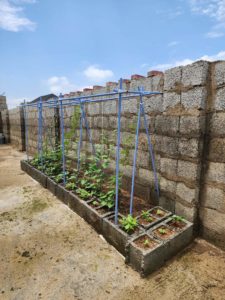Brazil : Floating Òrìşàs In Salvador, The Yoruba Capital Of Brazil
![]()
Salvador is a coastal city in Brazil. Founded in 1548, it is the country’s former capital and serves as the current capital of the state of Bahia. It is one of the oldest planned cities in the Americas.
Due to its location, early Europeans turned Salvador into an important trade route for slavery. Of the nearly 5 million enslaved people who were imported to Brazil, about 1.3 million were brought through Salvador. As such, the city experienced one of the largest uprisings of enslaved people who eventually gained their freedom and made an indelible mark on the city.
The city is known for its Afro-Brazilian art, architecture, and cuisine. One of the places where this is apparent is in the Church of Our Lady of the Rosary of the Black People. This Catholic church, built by enslaved and free black people, uses African chants and holds masses in the Yoruba language.
The historical center of the city of Salvador is a UNESCO World Heritage Site. The architecture dates from the colonial period when Portugal was newly establishing a stronghold in the region. The center of the city is often referred to as the Pillory district due to the fact that the squares, like Terreiro de Jesus, had pillories installed for public punishment and torture.
The city center has undergone vast reconstruction over the course of the last 30 years. Visitors will find historical buildings with updated facades. Many of these are churches, like the Cathedral Basilica of Salvador, the Church of Our Lady of the Rosary of the Black People
The Òrìşàs are principal manifestations in the city of Salvador
Dique do Tororó is the only natural spring in the city of Salvador, listed by the Instituto do Patrimônio Histórico e Artístico Nacional. Commonly reduced to Dique, it has a pond of 110 thousand cubic meters of water.
One of its main features are the eight sculptures of Orisas floating in the water mirror. They were installed in 1998 and are signed by the artist Tatti Moreno. They represent the Osun, Ogun Ososi , Sango , Osanla, Yemonja , Oya . At night, they have beautiful scenic lighting.
Originally, the Dique do Tororó was a dam built in the 17th century, with the function of protecting the city against invasions. From the 19th century, the site began to be grounded for the expansion of the city, reducing its size considerably. It is currently the only natural source in Salvador listed by the National Historical and Artistic Heritage Institute and is of great importance for African-based religions. No wonder the waters received the Orisás of Tati Moreno, in the 1998 renovation. The Dique do Tororó is a sacred place for Yoruba religion and Candomble fans who make offerings to the Orisas in its water
The post Brazil : Floating Òrìşàs In Salvador, The Yoruba Capital Of Brazil appeared first on The Ancestral News.




